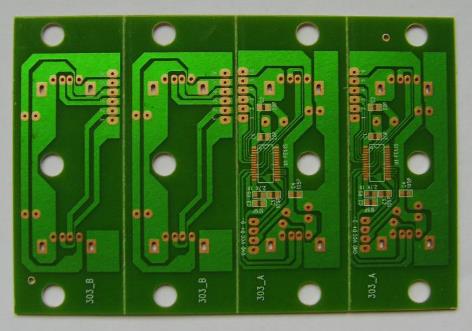1. Overview of the World PCB Industry
In 2013, global PCB increased by 9% compared with 2009, China increased by 12.5%, while the increase in southern China was even greater, at 18-19%. Looking forward to 2014, the world will continue to develop steadily, and it is expected to grow by 6-9%, while China is expected to grow by 9-12%. However, the problems in the upstream raw material links of the PCB industry chain seem to be unexpected by these foreign investors. The prices of copper foil, fiberglass cloth and copper foil substrates have been rising all the way, especially the rise in international copper prices has directly affected the domestic copper foil and copper foil substrate prices. Copper clad laminate is the direct raw material of PCB, and copper foil is the raw material that accounts for the largest proportion of the cost of copper clad laminate, accounting for about 30% (thick plate) and 50% (thin plate) of the cost of copper clad laminate. Therefore, the price increase of copper foil becomes the price increase of copper clad laminate The main driving force. In the upstream and downstream industry chain, raw material suppliers have absolute right to speak in transactions. In addition, the supply of raw materials in the market is less than demand. The pressure of rising costs is directly passed on to PCB manufacturers, and domestic PCB companies can hardly resist the market decline. The arrival of 2014 does not make PCB manufacturers as happy as other businesses, because they will continue to experience the first quarter of the regular off-season. How many companies can survive the industrial restructuring brought about by the rise in raw materials is unpredictable, but the future development trend of the domestic PCB industry will not be all the way down. This is an indisputable fact. With the continuous development of electronic technology, the demand for electronic products has increased, and the development of the PCB industry has become a general trend. Each era has its things that have been preserved and eliminated, and the things that have been preserved are often things that can adapt to the trend.

The era we live in is called the electronic information era. To become bigger and stronger companies must be able to grasp the pulse of this era to win development opportunities. For the PCB industry to make great achievements, it also needs to rely on the development of electronic technology. At present, flat-panel TVs and smart phones are popular in the market. Although the PCB market demand is temporarily unstable, the prospects are always promising.
Second, the status quo of China's PCB industry
Printed circuit board (PCB) is a substrate for assembling electronic parts. The global output value reaches 45 billion US dollars per year, second only to the semiconductor industry in the electronics industry, and China's growth rate is much higher than the industry average. Nowadays, electronic products are changing with each passing day, and price wars have changed the structure of the supply chain. China has both cost and market advantages. The PCB industry is gradually shifting to China due to costs and the transfer of downstream industries. China is the most growing PCB market in the world.
The entry barrier for low-end PCBs (under 4 layers) is relatively low, competition is relatively sufficient, and the degree of concentration is low. Under the pressure of downstream complete machine price reductions, product prices are often squeezed by downstream manufacturers. The high-end PCB (HDI, etc.) technology, equipment, and process requirements are very high, with high barriers to entry, and a long expansion period, which is in short supply in China.
The production capacity of Chinese PCB manufacturers is expanding rapidly, the output value is increasing, and the products are developing towards high-end. China's PCB manufacturers still have a lot of room for growth.
CCL (Copper Clad Laminate) and downstream products are separated by PCB boards. The price transmission is not so direct, the concentration is relatively high, and the bargaining power is higher than PCB. However, the single use of the product leads to a strong dependence on PCB; due to low-end products and special products The demand for PCB boards has led to low costs and room for small-scale manufacturers targeting specific market segments, making it more difficult for industry integration.
Major CCL manufacturers have implemented a scale-leading strategy, and have expanded their production. The strong position is maintained. The release of production capacity is concentrated in 2007-2008. However, the first half of 2008 is a traditional off-season, and price wars are unavoidable. In the long run, concentration is a trend, but the pain of short-term profit loss is inevitable.
The increase in the price of raw materials has made upstream manufacturers huge profits, and the Chinese government has strengthened environmental protection, which has accelerated the integration of downstream industries, increased entry barriers, and forced weakly competitive companies to withdraw from the industry.
The development of PCB has caused glass fiber manufacturers to increase the production of high-end electronic yarns. The electronic yarn industry is developing in the direction of tulle, and there is a trend of in-house kiln factories. The production scale of electronic cloth depends on the size of the furnace, with larger investment and higher concentration.
The ability to track and guarantee technological innovation, emerging industry needs and high-end major customer needs is the key for PCB manufacturers to obtain high profits.